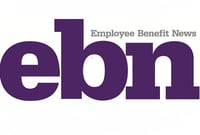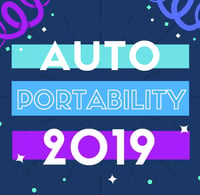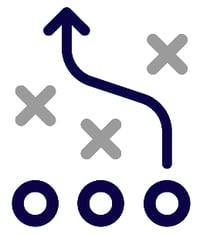Consolidation Corner
-
Blog
- 401k Cash Outs
- 401k Consolidation
- 401k Plan Termination
- America's Mobile Workforce
- Assisted Roll-in
- Auto Enrollment
- Auto Portability
- Auto Portability Simulation
- Automatic Roll-In
- Automatic Rollover
- Automatic Rollovers
- Boston Research Technologies
- CARES act
- Common Mistakes
- DIY Roll-In
- DOL Advisory Opinion
- EBRI
- Employee Benefit News
- ERISA Advisory Council
- Financial Services Roundtable
- Financial Wellness
- How-To
- In-Plan Consolidation
- Leakage
- Lifetime Plan Participation
- Lost Participants
- Managed Portability
- Mandatory Distributions
- MarketWatch
- Missing Participant IRA
- Missing Participants
- National Retirement Savings Cash Out Clock
- Participant Transition Management
- PLANSPONSOR
- Portability Services Network
- PSCA
- Public Policy
- RCH Services
- Retirement Income
- Retirement Plan Portability
- retirement research
- Retirement Savings Consolidation
- Retirement Savings Portability
- Roll-In
- Safe Harbor IRA
- Saver's Match
- Security
- Small Accounts
- Stale Dated Checks
- Synthetic Tenure
- Uncashed Check Services
- Uncashed Distribution Checks
- Video
- Webcast
- What is a Missing Participant?
Consolidation Corner Blog
Consolidation Corner is the Retirement Clearinghouse (RCH) blog, and features the latest articles and bylines from our executives, addressing important retirement savings portability topics.
Video: Is Auto Portability the Next 401(k) ‘ESG’ Initiative?

Three recent developments indicate that the retirement industry is waking up to the need to address 401(k) cashout leakage, and importantly – from within the framework of corporate social responsibility.
How Socially Responsible Corporations Will Solve the 401(k) Cashout Crisis
 Every year a silent, slow-motion train wreck occurs in America’s 401(k) system, when millions of job-changing workers prematurely cash out billions of dollars in retirement savings, a phenomenon known in retirement industry lingo as “cashout leakage."
Every year a silent, slow-motion train wreck occurs in America’s 401(k) system, when millions of job-changing workers prematurely cash out billions of dollars in retirement savings, a phenomenon known in retirement industry lingo as “cashout leakage."
How Sponsors can Help Minorities Save More for Retirement
 Every year, our nation’s retirement system loses $92 billion in savings because 401(k) plan participants prematurely cash out their accounts when they change jobs. This is the most recent estimate from the Employee Benefit Research Institute (EBRI), and while this finding affects all American workers, minorities are hit hardest.
Every year, our nation’s retirement system loses $92 billion in savings because 401(k) plan participants prematurely cash out their accounts when they change jobs. This is the most recent estimate from the Employee Benefit Research Institute (EBRI), and while this finding affects all American workers, minorities are hit hardest.
The New Age of DC Plan Portability
 A recent survey of defined contribution (DC) plan sponsors found that interest in retaining assets for retirement is on the rise. That finding, paired with certain provisions of the SECURE Act of 2019, suggests that DC plans are on a path to becoming “decumulation vehicles” for American retirees. While these developments are encouraging, persistently high levels of cashout leakage, increasing missing participants and other factors produce understandable pessimism regarding the future of DC plans.
A recent survey of defined contribution (DC) plan sponsors found that interest in retaining assets for retirement is on the rise. That finding, paired with certain provisions of the SECURE Act of 2019, suggests that DC plans are on a path to becoming “decumulation vehicles” for American retirees. While these developments are encouraging, persistently high levels of cashout leakage, increasing missing participants and other factors produce understandable pessimism regarding the future of DC plans.
Auto Portability 2019: The Year in Review
 At Retirement Clearinghouse (RCH), we’re excited about the 2020 prospects for auto portability. Before we’re too far into a new decade, we wanted to pause, take a breath and share with you some highlights from 2019, a year that’s positioned the newest automatic, default plan feature for widespread adoption.
At Retirement Clearinghouse (RCH), we’re excited about the 2020 prospects for auto portability. Before we’re too far into a new decade, we wanted to pause, take a breath and share with you some highlights from 2019, a year that’s positioned the newest automatic, default plan feature for widespread adoption.
A Financial Wellness Program You Can Actually Measure
Although the financial wellness of employees has emerged as a top priority for employers in recent years, too many workers are still struggling to improve their financial health.
The Surprising Migratory Patterns of Job-Changing Participants
 Much has been written in the media, including this column, about the increase in mobility of today’s American workforce.
Much has been written in the media, including this column, about the increase in mobility of today’s American workforce.
The Playbook for Conducting Diligent Missing Participant Searches
 Sponsors of active retirement plans are increasingly challenged by the problem of missing participants, and the difficulties they face in performing diligent searches. After all, ensuring that plan participants (or their beneficiaries) receive the benefits they’re owed is a sponsor’s primary fiduciary responsibility.
Sponsors of active retirement plans are increasingly challenged by the problem of missing participants, and the difficulties they face in performing diligent searches. After all, ensuring that plan participants (or their beneficiaries) receive the benefits they’re owed is a sponsor’s primary fiduciary responsibility.
Safe-Harbor IRAs are Supposed to be Temporary
The Auto Portability Imperative

-
Blog
- 401k Cash Outs
- 401k Consolidation
- 401k Plan Termination
- America's Mobile Workforce
- Assisted Roll-in
- Auto Enrollment
- Auto Portability
- Auto Portability Simulation
- Automatic Roll-In
- Automatic Rollover
- Automatic Rollovers
- Boston Research Technologies
- CARES act
- Common Mistakes
- DIY Roll-In
- DOL Advisory Opinion
- EBRI
- Employee Benefit News
- ERISA Advisory Council
- Financial Services Roundtable
- Financial Wellness
- How-To
- In-Plan Consolidation
- Leakage
- Lifetime Plan Participation
- Lost Participants
- Managed Portability
- Mandatory Distributions
- MarketWatch
- Missing Participant IRA
- Missing Participants
- National Retirement Savings Cash Out Clock
- Participant Transition Management
- PLANSPONSOR
- Portability Services Network
- PSCA
- Public Policy
- RCH Services
- Retirement Income
- Retirement Plan Portability
- retirement research
- Retirement Savings Consolidation
- Retirement Savings Portability
- Roll-In
- Safe Harbor IRA
- Saver's Match
- Security
- Small Accounts
- Stale Dated Checks
- Synthetic Tenure
- Uncashed Check Services
- Uncashed Distribution Checks
- Video
- Webcast
- What is a Missing Participant?
